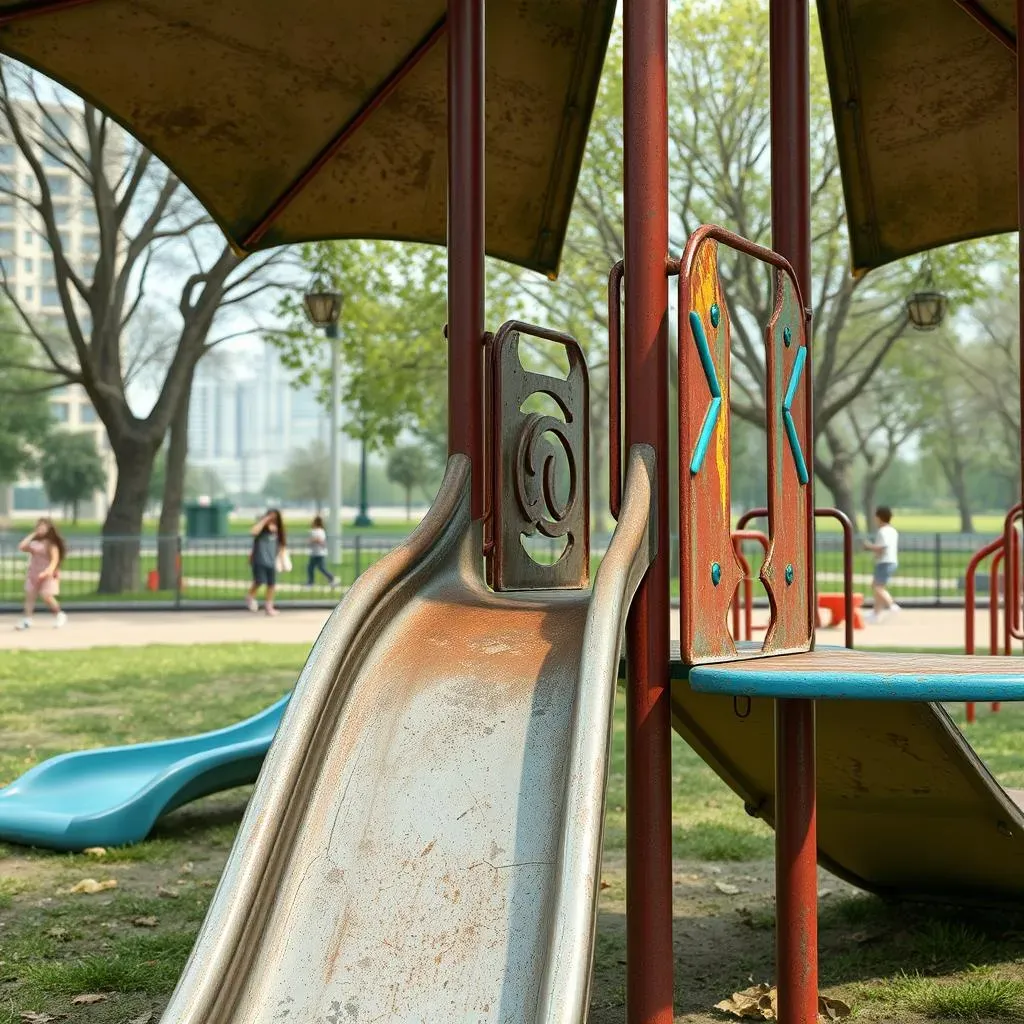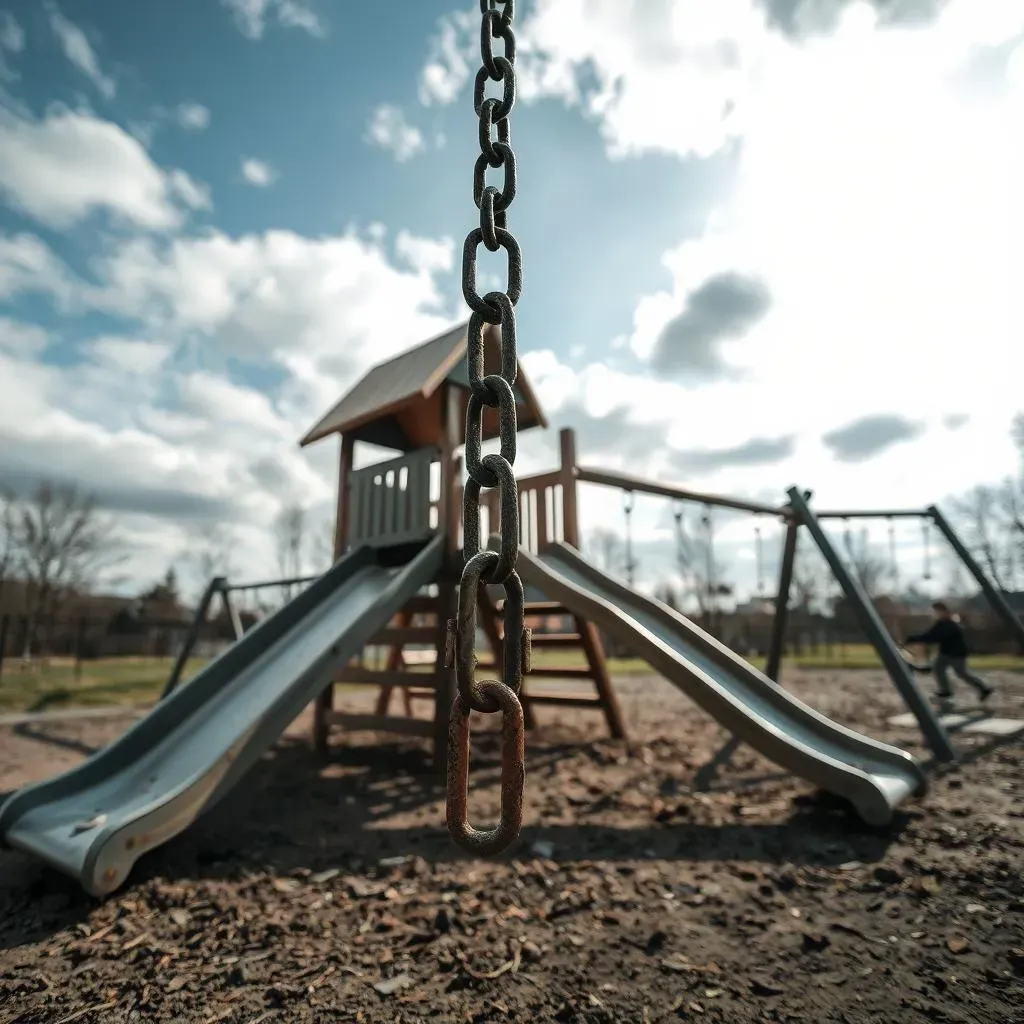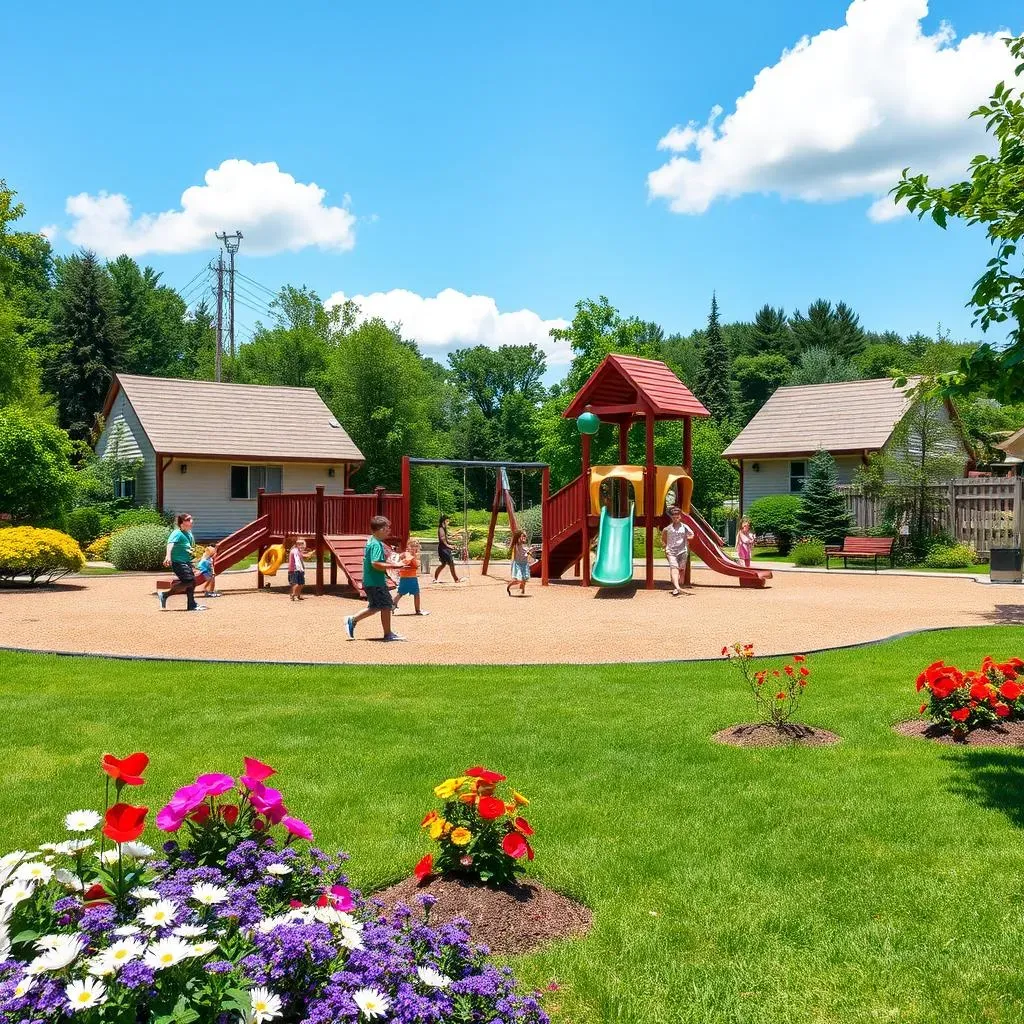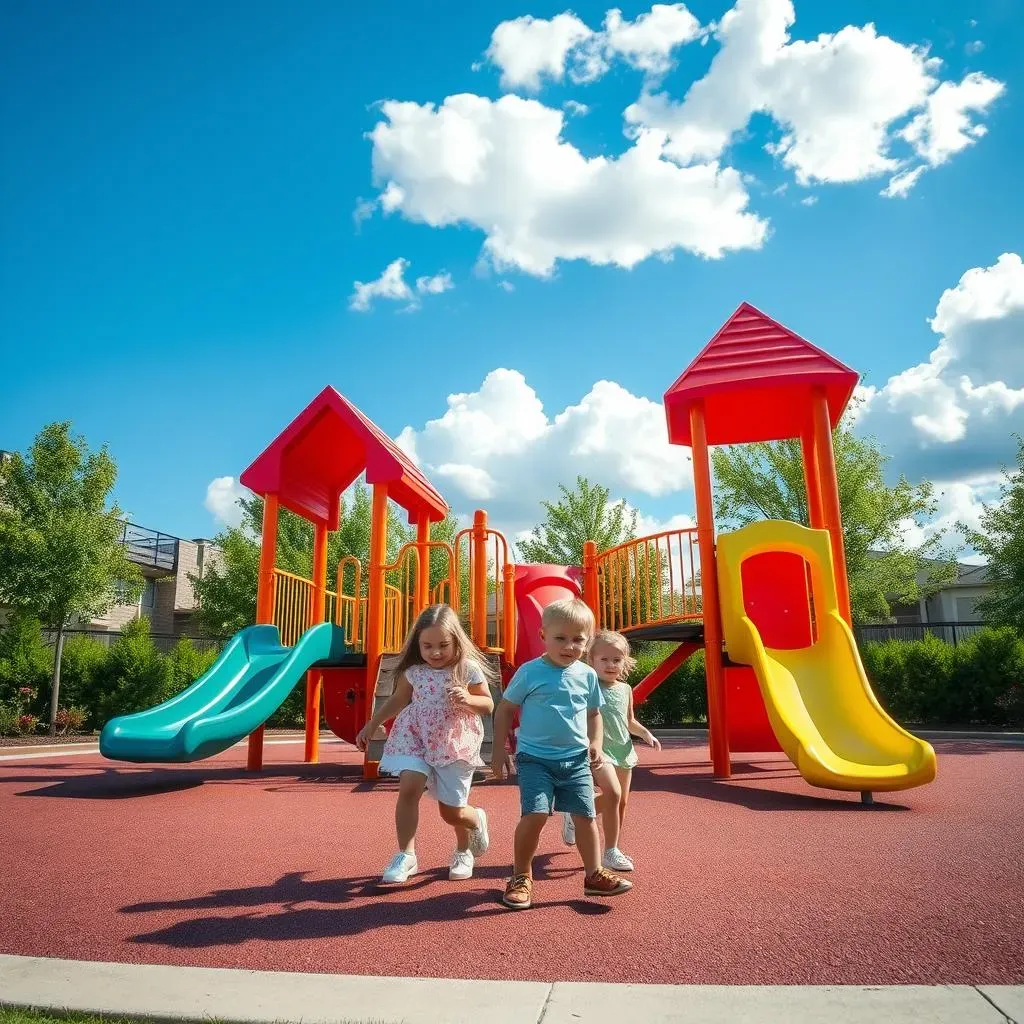Table of Contents
Ever wondered, "How long does playground equipment last?" It's a question every park manager, school principal, and community organizer faces. Playgrounds are more than just fun zones; they're investments in our kids' health and happiness. But like any investment, they require upkeep and eventually, replacement. The lifespan of your playground isn't set in stone; it's a mix of factors like the equipment's quality, how much it's used, and the climate it weathers.
Factors Influencing How Long Playground Equipment Lasts

Factors Influencing How Long Playground Equipment Lasts
Quality of Materials and Construction
The foundation of any long-lasting playground is the quality of its materials. Think about it: flimsy plastic versus sturdy steel makes a world of difference. High-density polyethylene (HDPE) plastics, powder-coated metals, and treated wood are your friends here. Also, consider the construction techniques used. Welded joints are generally stronger than bolted ones, and proper surface treatments can prevent rust and corrosion. Investing in quality upfront can save you a lot of headaches (and dollars) down the road. It's like buying a well-built car; it might cost more initially, but it'll last longer and require fewer repairs.
Don't skimp on the basics. Look for certifications like ASTM or IPEMA, which indicate that the equipment meets specific safety and quality standards. These aren't just fancy labels; they're a sign that the manufacturer has put in the effort to ensure their products can withstand the rigors of playground use. What's the point of having a slide if it cracks after a year?
Usage Intensity and Frequency
A playground at a bustling city park will naturally experience more wear and tear than one at a small, private school. The sheer volume of kids climbing, sliding, and swinging impacts how long the equipment lasts. Consider the age range of users too. Older kids tend to be harder on equipment than younger ones. Think about a popular swing set; if it's constantly in use from dawn till dusk, every day, it's bound to show signs of wear sooner than a swing set used sparingly.
Also, the type of activities matter. Equipment designed for high-impact activities, like climbing structures or slides, may need more frequent maintenance and eventual replacement compared to quieter features like benches or sandboxes. It's all about understanding the stress each component endures.
To get a better understanding, here's a simple table that shows some examples:
Factor | High Impact | Low Impact |
|---|---|---|
Usage | Constant daily use | Occasional weekend use |
Users | Mixed ages, including older children | Primarily toddlers and young children |
Activities | Climbing, sliding, swinging | Sand play, gentle rocking |
Environmental Factors and Climate
Mother Nature can be a playground's worst enemy. Intense sunlight, extreme temperatures, rain, snow, and even salt air can wreak havoc on playground equipment. UV radiation fades and weakens plastics, causing them to become brittle and crack. Freezing and thawing cycles can expand and contract materials, leading to structural damage. Rust is a constant battle in humid or coastal environments. The climate in Arizona is going to affect playground equipment differently than the climate in Alaska. Therefore, you need to consider this when you're considering what playground equipment to get.
Choosing weather-resistant materials is key. For example, powder-coated metal is more resistant to rust than painted metal, and certain types of wood are naturally rot-resistant. Proper drainage can prevent water from pooling and causing corrosion. Also, consider the location of the playground. Is it shaded from the sun? Is it sheltered from the wind? These factors can significantly impact the equipment's lifespan. If you're in Florida, think about materials that can handle humidity and intense sun. If you're in Minnesota, focus on materials that can withstand freezing temperatures.
Essential Maintenance Tips to Extend Playground Equipment Lifespan

Essential Maintenance Tips to Extend Playground Equipment Lifespan
Regular Inspections: Your First Line of Defense
Think of regular inspections as your playground's annual check-up. Walk the grounds frequently, looking for anything amiss. Are there loose bolts? Cracks in the plastic? Splintered wood? Catching these issues early can prevent them from escalating into major problems. Don't just glance; get up close and personal with the equipment. Wiggle the swing chains, test the stability of the climbing structures, and check the depth of the safety surfacing. It's like being a detective, but instead of solving crimes, you're preventing accidents.
Create a checklist to ensure you're covering all the bases. Include items like checking for sharp edges, ensuring moving parts are properly lubricated, and verifying that all hardware is securely fastened. Document your findings and schedule repairs promptly. Ignoring a small issue now can lead to a costly replacement later. It's better to be proactive than reactive.
Cleaning and Sanitization: Keeping it Safe and Inviting
A clean playground is a happy playground. Regular cleaning not only makes the equipment more inviting but also helps prevent the spread of germs and bacteria. Wipe down surfaces with a mild disinfectant, especially high-touch areas like handrails, slides, and swings. Remove any debris, such as leaves, twigs, and trash, that can accumulate and create hazards. Think of it as giving your playground a spa day, a little pampering goes a long way.
Consider the materials when choosing cleaning products. Avoid harsh chemicals that can damage or corrode the equipment. For wooden structures, use a wood cleaner specifically designed for outdoor use. For metal components, a simple soap and water solution often does the trick. A pressure washer can be useful for removing stubborn dirt and grime, but be careful not to use too much pressure, as it can damage some surfaces. A clean playground is a safe playground, and it shows that you care about the well-being of the children who use it.
Protective Surfacing: Maintaining a Safe Landing
Protective surfacing is your playground's safety net, designed to cushion falls and minimize injuries. But it only works if it's properly maintained. Regularly check the depth of the surfacing material, whether it's wood chips, rubber mulch, or poured-in-place rubber. Over time, the material can compact or get displaced, reducing its effectiveness. Replenish the surfacing as needed to maintain the recommended depth. It's like having airbags in your car; they need to be in good working order to protect you in a crash.
Also, ensure the surfacing extends far enough around the equipment. There should be a fall zone that meets safety standards. Remove any weeds or debris that can interfere with the surfacing's performance. Proper drainage is also crucial to prevent water from accumulating and creating slippery or icy conditions. Think of it as creating a soft, forgiving landing for all the little adventurers who use your playground.
Surfacing Type | Recommended Depth | Maintenance |
|---|---|---|
Wood Chips | 12 inches | Rake regularly, replenish annually |
Rubber Mulch | 6 inches | Rake regularly, replenish every 2-3 years |
Poured-in-Place Rubber | Varies by fall height | Inspect regularly, repair as needed |
Key Indicators It's Time to Replace Your Playground Equipment

Key Indicators It's Time to Replace Your Playground Equipment
Obvious Damage and Wear
Let's face it, sometimes the signs are glaringly obvious. We're talking about cracked slides, rusted swing chains, splintered wooden beams, and missing hardware. These aren't just cosmetic issues; they're safety hazards waiting to happen. Think of it like driving a car with bald tires; you're just asking for trouble. Regular inspections should catch these problems early, but if the damage is extensive or recurring, it's a clear signal that the equipment has reached the end of its lifespan.
Don't try to patch things up indefinitely. While a quick fix might seem like a cost-effective solution, it's often just a temporary band-aid on a much larger problem. Repeated repairs can actually weaken the structural integrity of the equipment, making it even more dangerous. It's like trying to save a sinking ship with duct tape; eventually, it's going down. When the repairs start outweighing the value of the equipment, it's time to consider replacement.
Outdated Safety Standards
Safety standards for playground equipment are constantly evolving. What was considered safe ten or twenty years ago might not meet today's requirements. Things like fall heights, surfacing materials, and spacing between components are all subject to change based on the latest research and best practices. Keeping your playground up to code isn't just about avoiding legal trouble; it's about protecting the children who use it. It's like upgrading the brakes on your car; you're investing in safety.
Even if your equipment isn't visibly broken, it might still be outdated. Check with your local parks and recreation department or a certified playground safety inspector to ensure your playground meets current safety standards. They can identify potential hazards and recommend upgrades or replacements as needed. Staying informed is key to providing a safe and enjoyable play environment. Remember, a playground should be a place of fun and adventure, not a source of worry.
Maximizing the Lifespan of Your Playground: Materials and Design

Maximizing the Lifespan of Your Playground: Materials and Design
Smart Material Choices for Longevity
When it comes to playground equipment, the materials you choose are everything. It's not just about aesthetics; it's about durability and resilience. For example, instead of standard wood, opt for treated lumber or composite materials that resist rot, insects, and weathering. For metal components, powder-coating is your best friend. It creates a tough, protective layer that prevents rust and corrosion, even in harsh climates. Think of it as dressing your playground in armor, ready to withstand whatever Mother Nature throws its way.
Plastic is another key consideration. High-density polyethylene (HDPE) is a great choice because it's UV-resistant, impact-resistant, and easy to clean. Avoid cheaper plastics that can become brittle and crack over time. Also, consider recycled materials. They're not only eco-friendly but can also be incredibly durable and long-lasting. It's a win-win situation for your playground and the planet.
Here's a quick rundown of material pros and cons:
Material | Pros | Cons |
|---|---|---|
Treated Lumber | Resistant to rot and insects, natural look | Requires regular sealing, can splinter |
Powder-Coated Metal | Rust-resistant, durable, wide range of colors | Can be expensive, may chip if damaged |
HDPE Plastic | UV-resistant, impact-resistant, easy to clean | Can fade over time, not as strong as metal |
Design Considerations for Extended Life
The design of your playground is just as important as the materials. A well-designed playground can minimize wear and tear, improve safety, and extend the equipment's lifespan. For example, consider incorporating shade structures to protect equipment from the sun's harmful UV rays. Proper drainage can prevent water from pooling and causing corrosion. And spacing equipment appropriately can reduce the risk of collisions and injuries.
Also, think about the layout of the playground. Placing high-traffic areas away from sensitive equipment can help distribute wear more evenly. Consider incorporating modular designs that allow you to easily replace or upgrade components as needed. And don't forget about accessibility. Designing a playground that's inclusive for children of all abilities can also make it more durable and long-lasting. After all, a playground that's used and enjoyed by everyone is a playground that's worth investing in.
Ask yourself these questions during the design phase:
- Does the design minimize exposure to harsh weather?
- Does the layout promote safe and efficient traffic flow?
- Are there opportunities for future upgrades and expansions?
Ensuring Safety and Longevity: How Long Should Playground Equipment Last?

Ensuring Safety and Longevity: How Long Should Playground Equipment Last?
Ensuring safety and longevity: How long should playground equipment last? That's the million-dollar question, isn't it? While there's no magic number, aiming for a lifespan of 10-15 years is a reasonable expectation, provided you're diligent with maintenance. However, it's not just about the years; it's about the quality of those years. A well-maintained playground that's regularly inspected and updated can provide a safe and enjoyable experience for children far longer than a neglected one. Think of it as the difference between a classic car that's been lovingly restored and one that's been left to rust in a junkyard. Both might be the same age, but their condition and value are worlds apart.
Ultimately, deciding how long playground equipment should last involves balancing safety, budget, and community needs. Regular risk assessments and adherence to safety standards are paramount. Don't hesitate to consult with certified playground safety inspectors for expert guidance. Remember, a playground is more than just a collection of equipment; it's a space where children learn, grow, and create memories. Investing in its safety and longevity is an investment in their future.
Conclusion: Investing in Play, Safety, and Longevity
So, how long does playground equipment last? The answer, as we've seen, isn't a simple number. It's a story shaped by quality, care, and community. By understanding the factors that impact lifespan, implementing proactive maintenance, and knowing when to replace equipment, you're not just extending the life of your playground—you're investing in the safety and well-being of the children who use it. Prioritize regular inspections, address repairs promptly, and choose durable materials. With these steps, you can ensure your playground remains a vibrant, safe, and joyful space for years to come, creating lasting memories for generations.